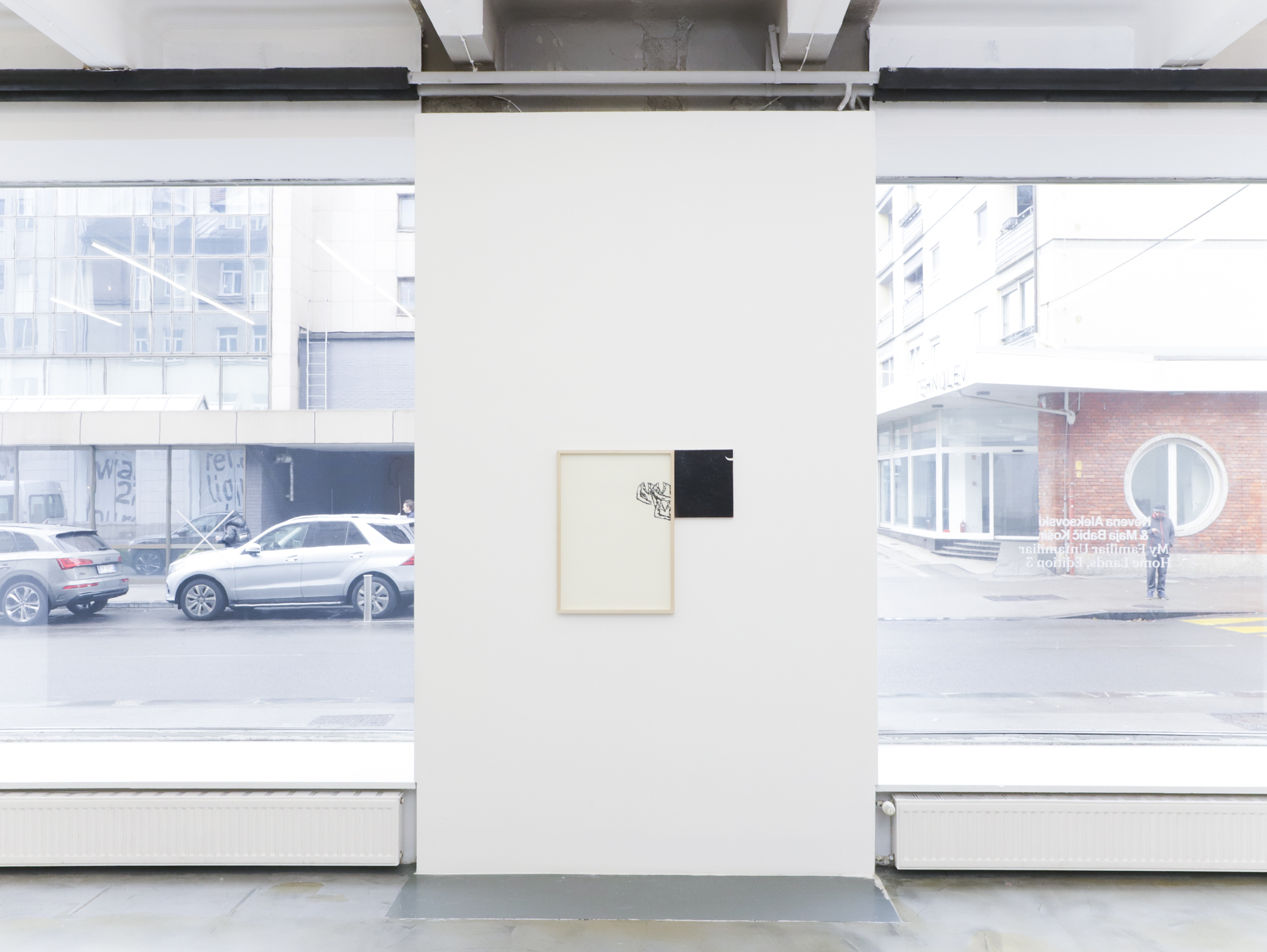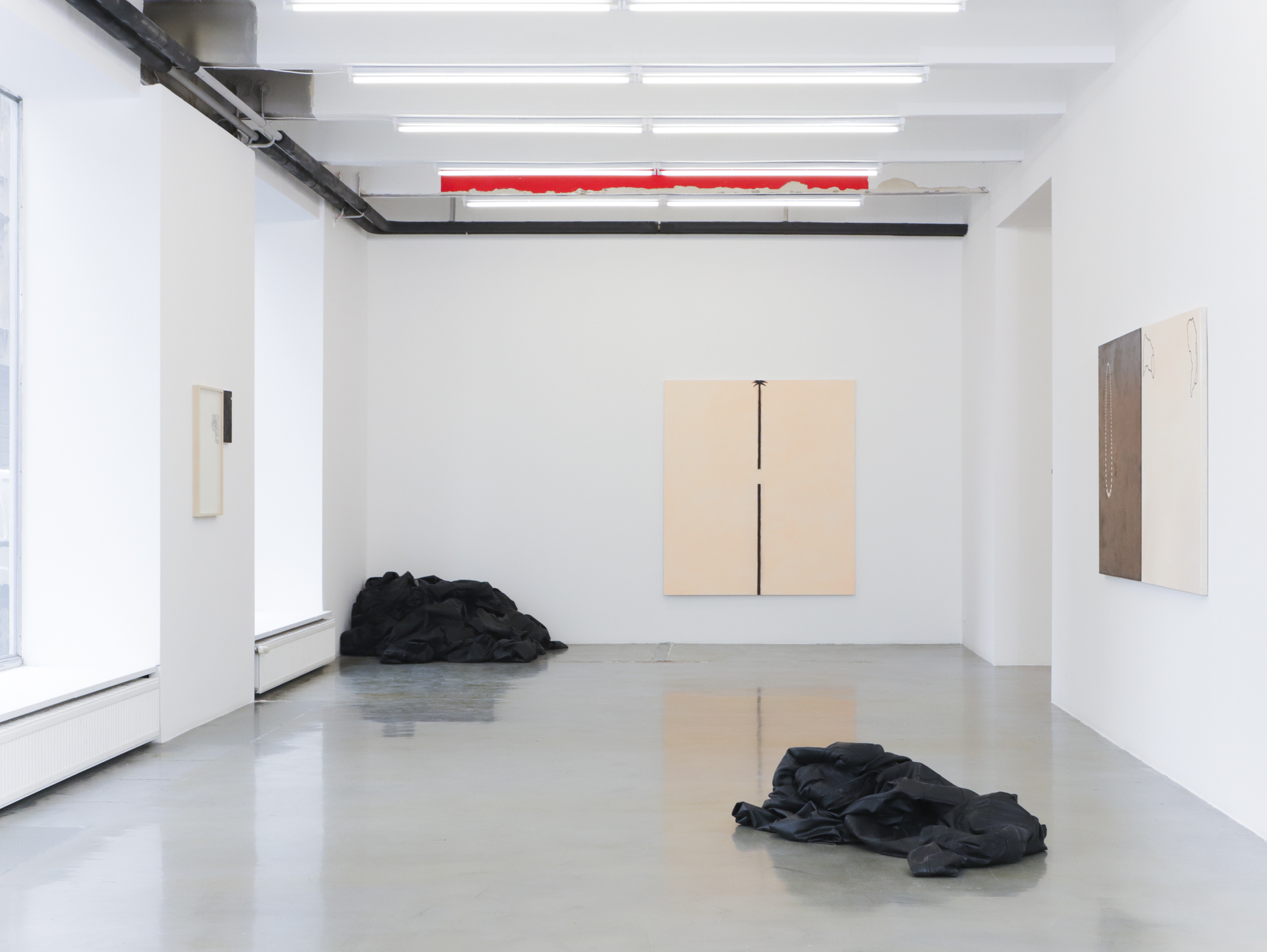NEVENA ALEKSOVSKI
Southern Southern
November 23 —
January 5, 2024
Southern Southern
November 23 —
January 5, 2024
LOCATION
RAVNIKAR GALLERY
Vošnjakova ulica 4
1000 Ljubljana
RAVNIKAR GALLERY
Vošnjakova ulica 4
1000 Ljubljana
CURATOR
Ilija Prokopiev
Ilija Prokopiev
PHOTOGRAPHER
Mario Zupanov
Mario Zupanov
STATEMENT
In an era marked by profound uncertainties, encompassing pandemics, natural calamities, and harrowing wars, Nevena Aleksovski's exhibition, Southern, Southern, emerges as an intuitive response—not to specific events, but to the inherent human tendency to erect boundaries, discriminate, and exclude. Through the latest works showcased at RAVNIKAR GALLERY SPACE, Nevena invites us into a unique experience, immersing us in the dark realm of learned and universally accepted stereotypical perspectives. Deeply embedded in societal consciousness, these ingrained views tend to resurface conspicuously with each global conflict, underscoring their pervasive nature.
My collaboration with Nevena Aleksovski began when I edited her book project titled "Melancholy of the Abandoned Lands," published by PrivatePrint in 2022, that tells the migration history of her family during Yugoslavia and after its dissolvement. Here she introduces us to the weight someone caries when being a migrant. Having this personal experience, her focal point of artistic exploration always originates from the concept of migration, a phenomenon that has shaped human history and societies. Whether voluntary or forced, migration provokes a negotiation process - a delicate dance between one's roots and the adopted environment. In general, Aleksovski's work captures the essence of this negotiation, unveiling the complexity of moderating one's heritage with the adopted culture, reflecting the interplay between past and present. The artist intricately tangles together visual elements to convey the dynamic tension between embracing new environments and retaining connections to one's origins. This uncomfortable place of being derives from the dissonance between familiarity and the unfamiliar, between a sense of belonging and alienation.
Therefore, migration is one of her most prominent themes, even in her latest production. However, the exhibition Southern, Southern is an extension of this concept towards topics addressing the struggles and prejudices faced by individuals considered 'Others' in a new environment, urging viewers to reflect on the human cost of exclusion and the significance of inclusivity in creating a more compassionate society. Or, more precisely, the confrontation and fight with stereotypes, an essential aspect of the migration experience.
Southern, Southern as a title carries an ironic message wrapped in an ambivalent undertone. Conceptualized as a sentence fragment, Southern, Southern, suddenly looks like an exclamation said out loud. It might sound like excitement but also like persecution. When one knows Nevena's art, it is clear that the symbolism of the South within her works bridges the artist's personal experiences and the universal aspects of migration. However, in this exhibition, she addresses the geographical movement from one place to another and delves deeper into the idea of migration, not as a migrant experience but as an idea of those who have never had this experience. Since standing on this comfortable and privileged side of the world's migration history is where the migration history is invented and is happening.
Southern regions, often associated with warmth, vitality, and a distinct cultural identity, become a metaphorical setting of a place, not merely in terms of geographical coordinates, but a place of dehumanization of the people from these regions, reducing them to caricatures or narrow representations that don't reflect their true diversity and complexity. Therefore, these fetishizing and harmful imaginations, defined as mysteries, fantasies, and allures, become comfortable zones for someone's feelings of superiority, hatred, and xenophobia. Creating an image of the South as an exotic place defined by the paradisiacal landscapes and rich traditions, still, very present practices in Western and Northern cultures make a nicely shaped terrain that always makes it easier to slide back to stereotypes than to learn from the world experience. This fetish, often referring to regions like Africa, South America, Southeast Asia, and the Mediterranean region, including the Balkans where Nevena is from, involves romanticizing or sensationalizing these areas and their cultures. They become places of meeting the Other, which according to Edward Said, described in his iconic book Orientalism, are actually places of fear, shaped by histories, fables, and stereotypes. (Said, 2019) He defines Otherness as a judgment that comes from the experience of meeting the new as a version of a previously known thing, defining it as a category of experience that is not much a way of receiving new information as it is a method of controlling what seems to be a threat to some established view of things, as the response is always conservative and defensive. (Said, 2019)
Nevena’s new artworks exhibited in RAVNIKAR GALLERY SPACE, serve as a visual narrative confronting this paradisiacal representation of the South. As in the previous works, here, too, through her minimalist method of painting, she keeps the idea between the old and the new, the familiar and the unfamiliar, consistently generating dual imagery. Her paintings show simple images of palm trees, a necklace, or unidentified objects that might be geographical maps or torn clothes. Combining these elements, Nevena makes us walk through a burned landscape deeply harmed by a stereotypical view. Her artistic approach unravels the complexities of these preconceived notions, challenging viewers to confront the implications and consequences of such pervasive biases. In her paintings we see objects, like being omitted from a bigger narrative that we cannot see, however we are still determined to bring a conclusion, that pushes us into a stereotypical way of thinking, a method through which Nevena confirms the stereotypes, on purpose, as a strategy in her work. On the other side, in addition to the paintings, this exhibition comprises an installation consisting of leather fabrics collected in piles resembling islands or archipelagos that, in their form, have accumulated the absence of the people and dehumanized lands. All these symbols are becoming darkened, like burned by the sun, where we see only shadows of reality, and we cannot perceive it as anything else but terrible. Actually, it is an image of how the South has been taught by others, as described in Franco Cassano’s book Southern Thought and Other Essays on the Mediterranean, as a place without dignity, where the lands’ end and the sea starts, a tourist's paradise, and a mafia nightmare. (Cassano, 2012)
In contemplating the exhibition, we are prompted to continuously discourse on the implications of these stereotypes, recognizing the urgency of dismantling the barriers they create. Southern, Southern becomes a compelling call to action, encouraging us to confront the unspoken biases rooted in our collective consciousness and foster a dialogue that transcends the boundaries of stereotypes, aiming for a more inclusive and empathetic global perspective. Additionally, through the multilayered exploration of migration, negotiations, symbols of mutual understanding, belonging, discomfort, territory, and Otherness, Nevena reminds us that art is not a place of fun but an uncomfortable place of existence, a place where artists are obliged to speak honestly so that viewers can face reality, a place where art can become an act of protest.
INSTALLATION VIEWS









LIST OF WORKS
In exhibition left to right
Coordinates, 2023
35 x 45 cm
Oil on canvas
Thin Layer, 2023
50 x 60 cm
Oil on canvas
Oh Gentlemen!, 2023
50 x 70 cm, 26 x 30 cm
Charcoal on paper
& Oil on canvas
Archipelago, 2023
Installation, found objects
Variable dimensions
Southern Southern, 2023
160 x 180 cm
Acrylic & Oil on canvas
Specially Designated, 2023
120 x 220 cm
Acrylic & Oil on canvas
